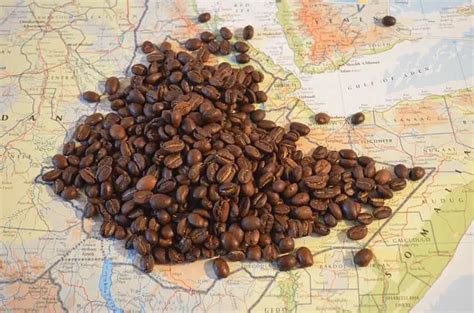The allure of coffee, a beverage so deeply ingrained in our daily lives that it’s hard to imagine a world without it. From the bustling streets of Tokyo to the quaint cafes of Paris, coffee has become an integral part of cultures around the globe. But have you ever wondered where this beloved drink originated? Let’s embark on a journey to uncover the birthplace of coffee, a story that spans centuries and crosses continents.
In the highlands of Ethiopia, where the sun dips into the horizon and paints the sky with hues of crimson and gold, lies the region of Kaffa. It’s here, in the 9th century, that legend has it a goatherd named Kaldi discovered the energizing effects of coffee. Kaldi noticed that his goats became more energetic and alert after feeding on the bright red berries of a certain plant. Curious, he decided to try the berries himself and felt invigorated. As news of this miraculous plant spread, the local monastery began to cultivate it, and soon, the monks were using the berries to stay awake during long hours of prayer and meditation.
The legend of Kaldi and his goats has become an integral part of coffee's folklore, but it's essential to note that the origins of coffee are not well-documented, and this story may be more myth than fact. Nevertheless, it highlights the significant role that Ethiopia has played in the history of coffee.
As trade routes expanded, coffee began its journey out of Ethiopia, traveling to the Arabian Peninsula and eventually to the Middle East. The Arabs were responsible for the first commercial cultivation of coffee and for developing many of the techniques that are still used today, such as roasting and brewing. They also gave coffee its name, “qahwa,” which is Arabic for “that which prevents sleep.”
Coffee Production: From Seed to Cup
- Planting: Coffee seeds are planted in nurseries and then transplanted to fields where they're carefully nurtured.
- Harvesting: Coffee cherries are picked at the peak of ripeness, typically between May and October, depending on the region.
- Pulping: The outer skin of the cherry is removed, leaving the inner seeds intact.
- Fermentation: The seeds are left to ferment, breaking down the mucilage that covers them.
- Drying: The seeds, now referred to as beans, are dried to a moisture level of about 11%, either by machine or sun-dried.
- Roasting: The green coffee beans are roasted to bring out the desired flavor and aroma.
The Middle East played a pivotal role in the development of coffee culture, with the first coffeehouses opening in the 16th century. These establishments became hubs of intellectual and artistic expression, where scholars, poets, and musicians would gather to discuss the issues of the day over cups of coffee. As trade and colonization expanded, coffee spread to Europe, where it became a staple of urban life, particularly in England, France, and Austria.
What are the main types of coffee beans?
+There are two main species of coffee beans: Arabica and Robusta. Arabica is considered to be of higher quality and has a more delicate flavor, while Robusta is more bitter and has a higher caffeine content.
How does altitude affect coffee flavor?
+Coffee grown at high altitudes tends to have a more complex flavor profile and a slower maturation process, resulting in a better-balanced acidity and a richer taste.
Today, coffee is grown in over 70 countries around the world, with Brazil, Vietnam, and Colombia being among the top producers. The industry has evolved significantly, with advancements in technology, changes in consumer preferences, and growing concerns about sustainability and environmental impact. Despite these changes, the essence of coffee remains unchanged – it’s a drink that brings people together, fosters creativity, and provides a moment of solitude in a busy world.
Pros and Cons of Coffee Consumption
| Pros | Cons |
|---|---|
| Improves cognitive function and alertness | Can lead to addiction and increased heart rate |
| May reduce risk of certain diseases, such as Parkinson's and Alzheimer's | Can cause insomnia and disrupt sleep patterns |
| Has antioxidant properties and may improve physical performance | Can increase anxiety and jitteriness in high doses |

As we sip our coffee, whether it’s a rich espresso or a flavored latte, we’re not just enjoying a drink; we’re participating in a centuries-old tradition that has shaped cultures, economies, and our daily lives. The story of coffee’s origin is a testament to the power of human curiosity, innovation, and the enduring appeal of a simple, yet extraordinary, beverage. So the next time you take a sip, remember the journey it took to get to your cup, from the sun-drenched hills of Ethiopia to the cozy cafes of your hometown.



